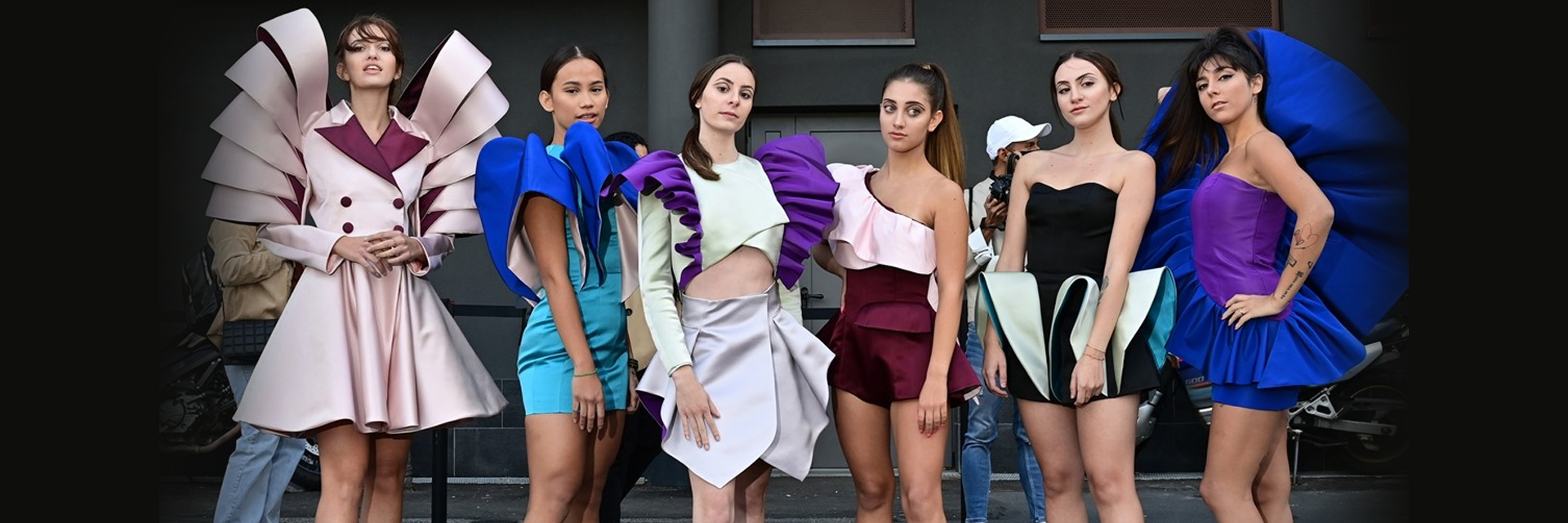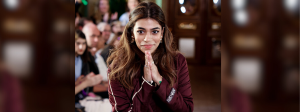(May 4, 2024) Even though India is not regarded as an international fashion hub, several Indians are responsible for the embroidery, embellishments, and fabrics you see from prestigious fashion houses like Versace, Hermès, Christian Louboutin, Gucci, Prada, Dior, and more. Carving a name for themselves, many new-age Indian fashion designers are climbing up the ladder in the cut-throat industry of haute couture. And one such name that has been making waves for quite a while now is New York-based fashion designer, Sheena Sood.
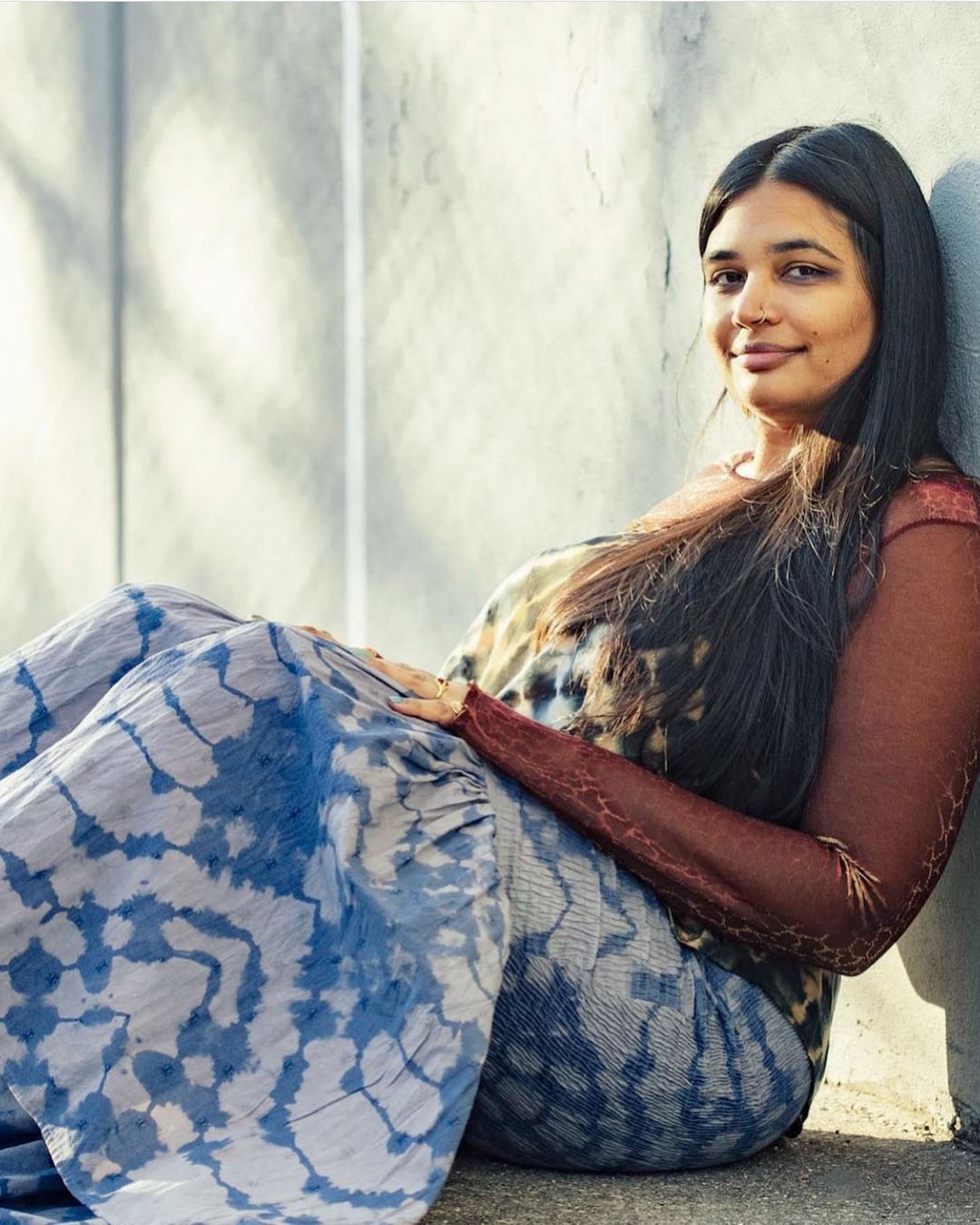
The young designer is known for celebrating diversity and colours through her fashion house, abacaxi – which is the Portuguese word for ‘pineapple’, which was inspired by a joyful holiday memory on the beaches of Morro de São Paulo. Weaving inspirations from Indian culture, travel, and nature, Sheena’s designs are an amalgamation of world cultures, sustainable production techniques, and striking patterns. “I think it runs in my blood, this obsession with colour, seeking it throughout my life,” said the Global Indian, adding, “My sense of colour comes from traveling in India and the use of colour in our culture. I love Indian maximalism and all of that saturation. It’s so different. And that’s really what inspires me.”
Discovering the artist within
Born in Minneapolis to Indian parents, Sheena would often visit her hometown in India during holidays. While she wasn’t too sure about her path as a young girl, her travels to India inspired her to take up a career in fashion. Observing the striking difference between the day-to-day fashion in USA and India gave her a unique sense of combining various colour palettes – and that’s how her journey began.
“My parents moved to the US from India, and I kind of grew up traveling a lot. We would go back to India to visit family every so often. Those trips ultimately led me to want to be a designer. I remember experiencing the stark difference in the way that people dress there versus where I grew up in the US — the use of colour, the sense of design. It informed a lot about my life and also my work as a designer,” said the youngster, who often incorporates embroidery, beading and sequin work into her designs.
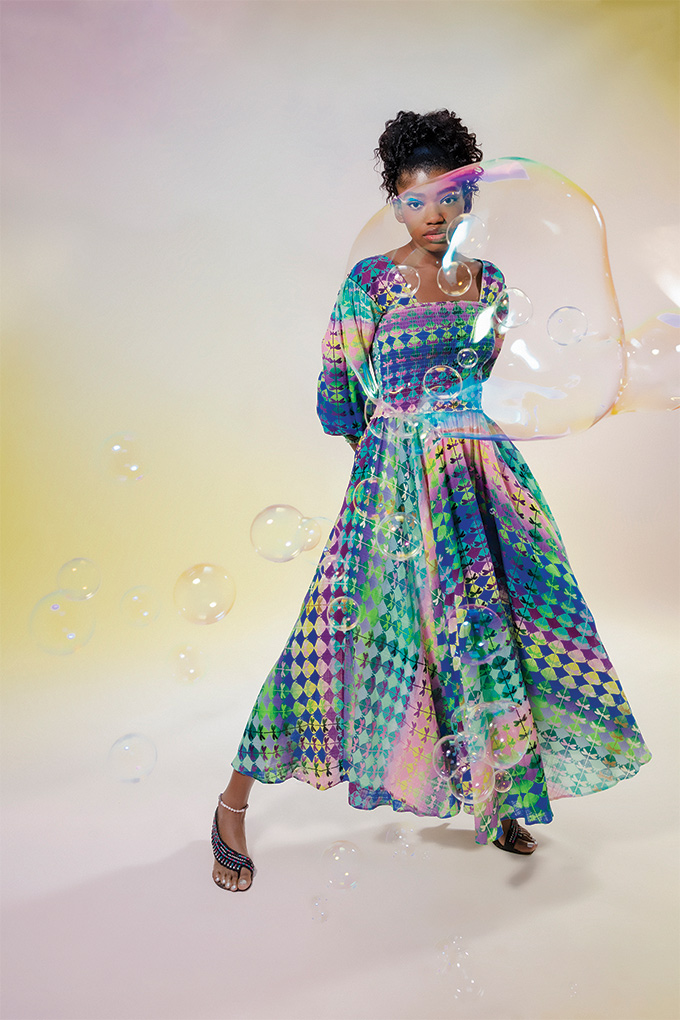

A dress from one of the latest collections of Sheena
After completing her schooling, the youngster enrolled at Brown University where she studied visual arts, and later earned a degree in textile designing from the Central Saint Martins, University of the Arts in London. Soon after graduating, she developed print and embellishment designs for the American label Tracy Reese before briefly moving to India to live with her family. It was during that time that she discovered a whole new world of custom-made dresses in India. “I was fascinated by the custom garment-making process in India—how you could go to the market, buy the fabric and take it to the tailor. I was exposed to the rich, kaleidoscopic world of Indian textiles early on and that has had a huge influence on my work,” said the designer, who soon shifted to Brooklyn and started working on her own brand.
Giving wings to her dreams
While she was now clear that she wanted to start her own fashion brand that would celebrate traditional hand-crafted textiles, there was much research to be done in the field to incorporate patterns and colours from cultures across the globe. “My love for adventure took me to places such as Brazil, Indonesia, Vietnam, Peru, and Mexico. I explored and studied what I am most passionate about– Indigenous textiles. That knowledge of specialised techniques and craft is integral to my design ethos,” the designer writes on her website.
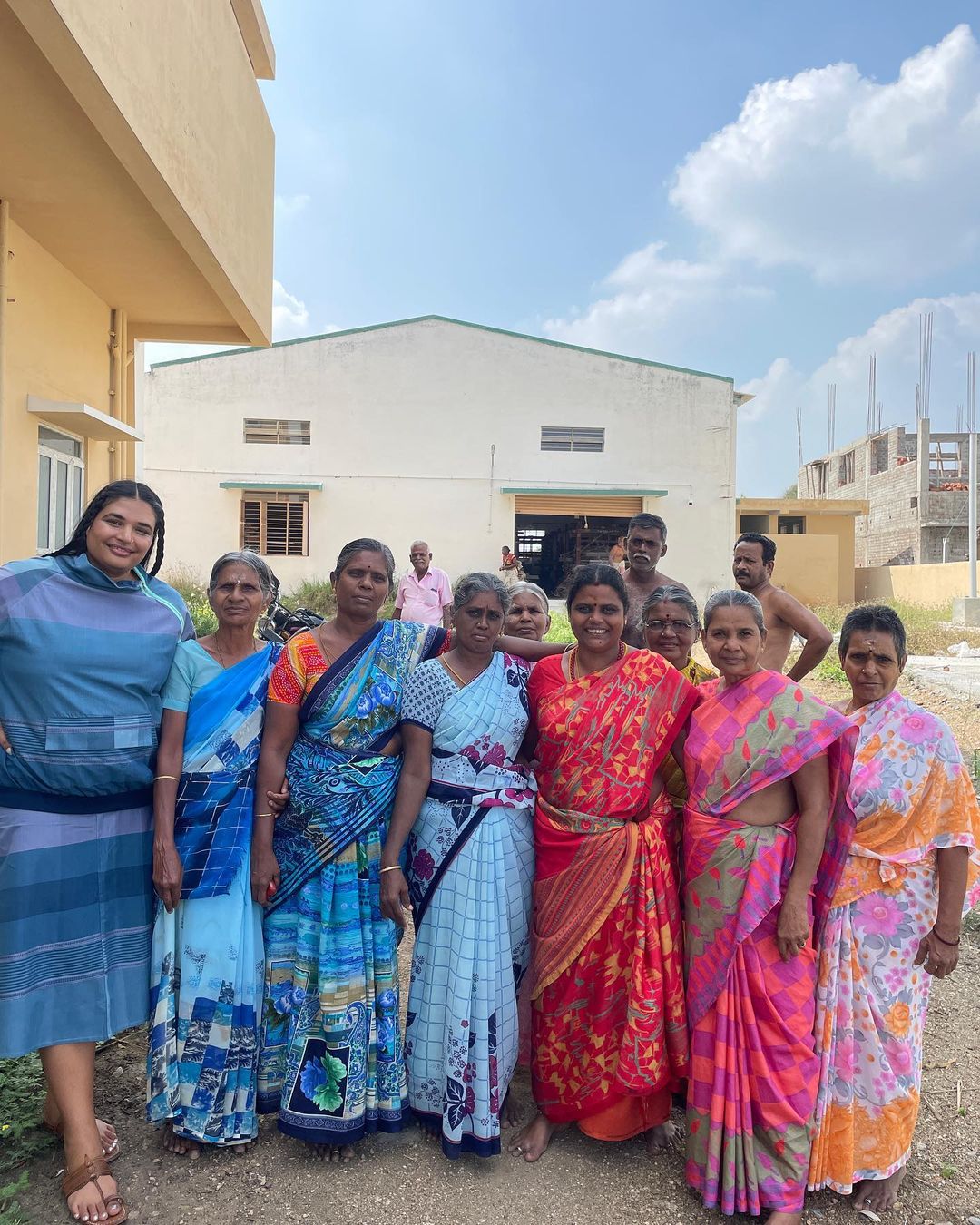

Sheena along with female weavers during a recent handloom workshop in Tamil Nadu
The designer started her company – abacaxi – with a capsule of silk garments that showcased vintage embroideries which she collected in Rajasthan. Speaking about why she chose to start her own label, the designer said, “While there are a lot of brands that produce garments in India, I wanted to work with artisanal textile, embroidery, and beading techniques. There are so many at risk of disappearing because they’re not done as widely anymore and I wanted to find a way to bring those intricate processes into everyday clothes, not just for an occasional piece for a wedding.”
Climbing up the ladder
Eventually, the brand garnered much interest from fashion lovers, especially youth, and Sheena became a known name in the industry. However, even as she was climbing up the ladder, the pandemic shook the world – and halted her plans of making an international debut at the 2020 Paris Fashion Week. Although she, too, was stressed at the beginning of the pandemic, the designer soon found herself drawing a stingray print that would become the basis of her next collection.
“I asked myself why this was coming up for me at this time and remembered my first time snorkelling in Costa Rica. I had always had a fear of drowning, but the water was so warm and clear that I finally did it. It was one of those transformative moments. I had never seen anything like this underwater world. And the stingrays on the ocean floor struck me. They became a symbol of transformation, of overcoming fear,” she said.
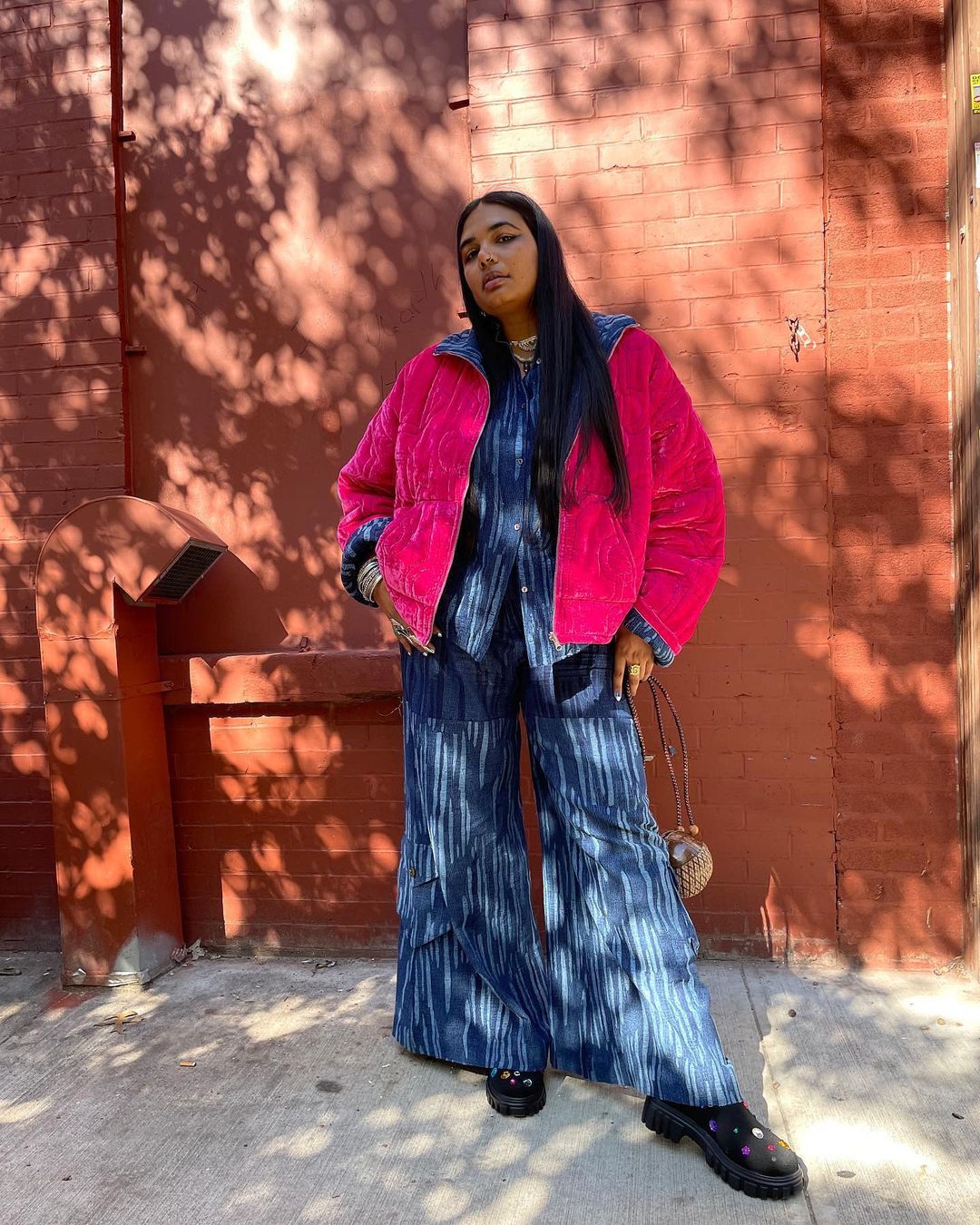

But as they say, ‘all good things take time.’ The designer was able to launch her first full collection later that year, which featured natural dyes, fibres, and unused saris. “From the beginning of Abacaxi, sustainability was always part of my process. We work with a regenerative cotton farm in India. Regenerative organic cotton, it’s simply just the way that cotton was farmed in ancient times. It really restores the land but also yields a better crop at the same time,” she said about her work process.
Currently working on a new collection, Sheena believes that there is plenty of space for diverse voices and aesthetics. “There still are very few recognised South Asian designers in the US, and I hope to keep breaking down those barriers so more perspectives can be seen. Even though things are changing, it isn’t very often I see someone who looks like me, doing what I do. I know firsthand how life-changing representation is for young people,” she said.


